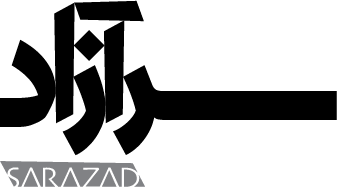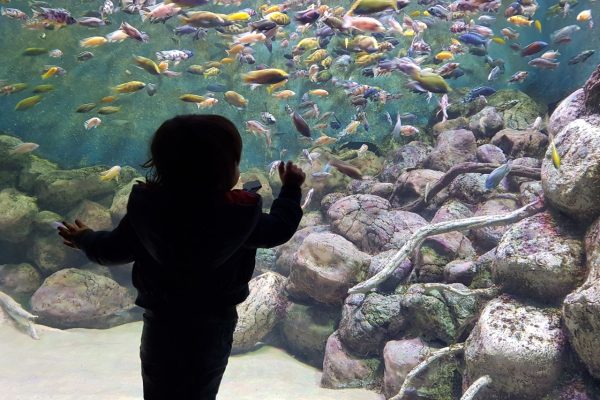Autoethnography is a relatively new approach in the realms of research, representation, interpretation, and exposition of social and cultural phenomena. This methodology enables a focused exploration of the author’s or artist’s personal experiences and their comprehension of social contexts. It serves as a response to a notable gap in academic knowledge, a gap that conceptually pertains to acknowledging the researcher’s “emotions and corporeality” and artistically involves the “narrativization” of lived experiences[1]. Essentially, autoethnography entails the examination of cultural phenomena through the lens of personal experience.
As a writer and academic specialising in anthropology, choosing the subject of “Women’s Narratives of the Construction of Maternal Identity” for my doctoral thesis led me to contemplate the most suitable research methodology. Surprisingly, I realized that my journey of becoming a mother inadvertently plays a significant role in this process, enabling me to resonate with other mothers’ diverse voices and narratives empathetically. Traditional research methods typically advocate a neutral, objective, and external approach, often involving interviews and conversations with fellow mothers. This approach aims to ensure an unbiased understanding of maternal identity. However, I myself had an experience of a form of maternal identity that made me a potential informant for this research. My personal experience catalysed this research journey, but I now had to set it aside to uphold the research’s “neutral” and “scientific” integrity.
Over time, I came to realize that intentionally overlooking my experience of motherhood, with all its intricacies, changing nature, and dynamism leads to a detrimental disconnect from the research field. In essence, the narratives of this research demanded introspection, reconsideration, exploration, and investigation into the most mundane and everyday aspects of a mother’s life. This was essential to peel away the superficial layers of social reality and reveal the socio-cultural and political contexts surrounding “motherhood” in the field I had chosen.
There was a distinct necessity for direct, first-hand documentation of the intricacies of family relationships, positionality of individuals and their overlapping identities, along with the emotions and physical experiences that contributes to the formation of maternal identity. This approach had the potential to unveil novel insights into the fabric of social life. It called for a form of narrative that bore witness, one that could only be achieved through the lens of the researcher’s own maternal experiences.
Through the practice of autoethnography, I successfully managed to redefine my identity within the narratives of the research, first as a researcher and then as a mother. This approach allowed for a profound enrichment of the research findings, infusing them with a deeper sense of introspection. It enabled the inclusion of personal motivations, as well as the incorporation of physical experiences, pains, sensations, emotions, and even moments of silence – essentially, the sensory perceptions that I, as a mother, had personally encountered. This method opened the door to the contextualization of complex, multi-layered situations within the broader social framework, shedding light on aspects of human identity that are often overlooked in conventional social research.
“Since our last meeting, I’ve been thinking that my home in Narmak is just a thirty-five-minute drive from Tayebeh’s place in Atabek neighbourhood, and yet it feels as if we come from entirely different worlds. It’s as if I’m from Tabriz and she’s from Bandar Abbas—places hundreds of kilometers apart.
For me, motherhood began as a conscious choice, a voluntary path marked by meticulous medical care and oversight. In her case, it was an unforeseen event, devoid of choice and lacking even the most basic medical attention. It’s been a struggle for me to reconcile with the fact that the same level of scrutiny, medicalization, and the undue emphasis on consumption and commodification that left me feeling passive and disempowered is actually a utopian ideal for another mother.
The constant unmet need for check-ups, ultrasounds, unplanned dietary changes, and all that pregnancy extravagance only served to tether her to a persistent sense of yearning. She herself believes that had she enjoyed proper nutrition during her pregnancy and not been burdened by the weight of an uncertain and illusory future for her family, which plunged her into depression and self-absorption, her son might not have born prematurely but rather as a healthy, full-term baby. This matter is of utmost significance, as I am convinced that this enduring sense of unfulfilled need has profoundly influenced both her experience of motherhood and her perspective on this role. It is impossible to divorce her motherhood from the constant backdrop of illness, medical emergencies, and perpetual financial instability, as these have become inseparable facets of her maternal journey.”[2]
The reflective method of autoethnography, as I’ve gradually come to understand it, is deeply intertwined with human action and responsibility. It provides an opportunity for both the writer/artist and the reader to gain a better understanding of their place in life, imbuing it with meaning and striving for its improvement. Consequently, personal narratives cease to be mere life descriptions or reminiscences; instead, they have the potential to serve as a platform for exploring the concept of “change.” This narrative approach actively perceives “personal matters” as inherently “political,” possessing a critical perspective while also fostering a commitment to shaping the future of the world. It nurtures diverse and alternative forms of awareness. The understanding of autoethnography with which I’ve engaged is steadfastly committed to the idea of “emancipation.”
This form of autoethnography prompts the audience to recognize that there are no absolute truths. Through autoethnography, the writer/artist transforms personal stories into political realities by revealing the power imbalances concealed within human relationships and shedding light on the intricate tapestry of emotions within these unequal dynamics. These thought-provoking narratives are conveyed in the everyday language of ordinary people, taking them on a journey where problematic yet relatable personal experiences and social relations are documented in such a way that traces of change can be discerned within them.
“What should I do with my Kurdish identity? What about my unrecorded and solely spoken Kurdish heritage? For instance, I can identify instances where my mother tongue intersects with my stepmother’s language, and the logic of the Kurdish language asserts itself within the Persian context. Locating these anti-colonial intersections within language, assuming they exist, constitutes a research topic in itself. Alternatively, I can explore the conventional identity constructs in post-colonial literature. For instance, I could choose a Kurdish title for a portion of this thesis, or even better, align it with the tradition of minority literature, which aligns with Deleuze’s concepts.
No, dear, write in Farsi! Express yourself in the dominant language, in the language of your other self. Why does it matter to you? Can you even claim mastery of any language at all? Consider this: the four historical works related to the Kurdish regions, namely Badlisi’s Sharafnama, Hadiqat Al-Naseri, Sanandaji’s Zubdat al-Tawarikh, and Seyr Al-Akrad, as well as Tohfa Al-Naseri, were composed in Persian and Arabic languages. Are you a Kurd or a Kurmanj? Does your language extend beyond spoken communication? What substantial contribution can you make with this simplistic and limited grammar?”[3].
Enabling change requires adopting a humble and context-dependent perspective. Autoethnography, with its emphasis on the diverse facets of a specific society or phenomenon, embraces a pluralistic outlook and carves out room for the exploration of less visible aspects. In such a context, it becomes possible for marginalized viewpoints to voice the imperative need for societal change, making it conceivable, if not inevitable.
By exposing the fact that no person’s actions can be politically neutral, autoethnography regards it as the writer/artist’s responsibility to take a stance and disclose his/her biases to the audience. This approach fosters greater introspection and self-reflection. Rather than treating one’s beliefs as infallible scientific or universal principles, the author/artist consciously underscores those beliefs, subjecting them to scrutiny and reevaluation to illustrate how these beliefs shape our perception of the world. Such a platform inherently facilitates dialogue and confrontation between dominant and privileged identities and those on the margins, while also uncovering how prevailing discourses are perpetuated by individuals in everyday life.
Simultaneously, ongoing experiences, sensory perceptions, and bodily sensations serve as vital sources that are enriched by critical perspective. This means that a critical viewpoint can scrutinize supposed established knowledge with a discerning eye, challenging prevailing social norms and ideas.
In our contemporary era, writing from personal experience stands as a pivotal avenue for contemplating the shared aspiration of all humanity—the realisation of “justice.” Narrating systematic and structural discrimination represents a moral commitment to justice and also aids in comprehending the mechanisms that perpetuate inequality. Storytelling transcends mere accounts of human experiences; it has the power to kindle the imagination of “change” and unveil new possibilities.
When writers/artists endeavours to carve out space for questioning their experiences, perceptions, and choices, they pave the way for alternative possibilities, both for themselves and their audience—a path towards emancipation. We must engage in self-reflection, contemplating the present moment and our human relationships, in order to infuse human emotions into our analysis of all facets of life and, most importantly, to maintain morality in this “dark age.”
[1] Ellis, C. & Bochner, A. (2000) Autoethnography, Personal narrative, Reflexivity: Research as subject. In N Denzin & Y. Lincoln(Eds.), Handbook of Qualitative Research (733-768) Thousand Oaks, CA: Sage.
[2] Alinaqian, S. (2022) The Pale Blue Line: A Reflexive Narrative about Mothering in Modern Iran, Farhang Javid Pub, Tehran.
[3] Tolouei, M. (2013) An Auto-ethnographical Analysis of a Kurmaj from Khorasan. Thesis in fulfilment of a Master of Anthropology, University of Science and Culture, Tehran.


